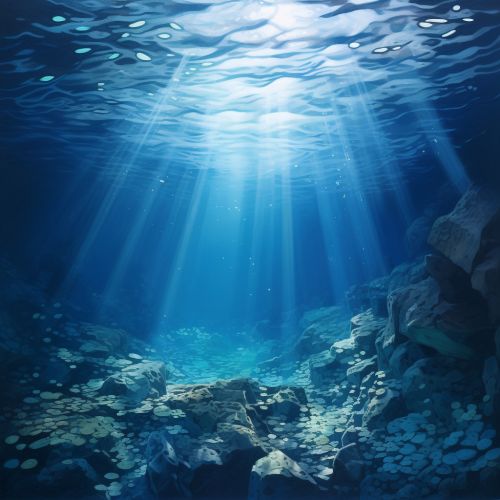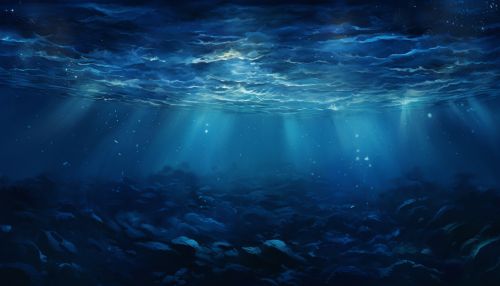The Chemistry of Deep Ocean Carbon Sequestration
Introduction
Deep ocean carbon sequestration is a process by which carbon dioxide (CO2), a greenhouse gas, is captured from the atmosphere and stored in the deep ocean. This process is a potential strategy for mitigating the impact of anthropogenic CO2 emissions on global climate change.


Chemistry of Carbon Sequestration
The chemistry of deep ocean carbon sequestration involves several key processes, including the dissolution of CO2 in seawater, the formation of carbonic acid, and the precipitation of carbonate minerals.
Dissolution of CO2 in Seawater
When CO2 is introduced into seawater, it can dissolve to form a weak acid known as carbonic acid. This reaction can be represented as follows:
CO2(g) + H2O(l) ↔ H2CO3(aq)
The equilibrium of this reaction is influenced by several factors, including temperature, pressure, and the concentration of CO2 in the water.
Formation of Carbonic Acid
Carbonic acid is a weak acid that can dissociate in water to form bicarbonate (HCO3-) and hydrogen (H+) ions. This reaction can be represented as follows:
H2CO3(aq) ↔ HCO3-(aq) + H+(aq)
The equilibrium of this reaction is also influenced by several factors, including pH and the concentration of bicarbonate and hydrogen ions in the water.
Precipitation of Carbonate Minerals
Bicarbonate ions can react with calcium ions in seawater to form insoluble calcium carbonate (CaCO3) minerals, which can then sink to the ocean floor. This reaction can be represented as follows:
Ca2+(aq) + 2HCO3-(aq) ↔ CaCO3(s) + CO2(g) + H2O(l)
This process is a key component of the ocean's biological pump, which helps to sequester carbon in the deep ocean.
Factors Influencing Deep Ocean Carbon Sequestration
Several factors can influence the efficiency and effectiveness of deep ocean carbon sequestration. These include ocean circulation patterns, biological activity, and the chemical composition of seawater.
Ocean Circulation Patterns
Ocean circulation patterns can play a critical role in the transport and sequestration of carbon in the deep ocean. For example, the thermohaline circulation, also known as the ocean's "conveyor belt," can transport carbon-rich surface waters to the deep ocean, where the carbon can be sequestered for hundreds to thousands of years.
Biological Activity
Biological activity can also play a significant role in deep ocean carbon sequestration. For example, photosynthetic organisms such as phytoplankton can absorb CO2 from the atmosphere and convert it into organic matter through the process of photosynthesis. When these organisms die, they can sink to the ocean floor, taking the sequestered carbon with them.
Chemical Composition of Seawater
The chemical composition of seawater can also influence the efficiency of deep ocean carbon sequestration. For example, the concentration of calcium ions in seawater can influence the precipitation of calcium carbonate minerals, which can help to sequester carbon in the deep ocean.
Potential Impacts of Deep Ocean Carbon Sequestration
While deep ocean carbon sequestration has the potential to mitigate the impacts of anthropogenic CO2 emissions on global climate change, it also has potential impacts on ocean chemistry and marine life.
Impacts on Ocean Chemistry
Deep ocean carbon sequestration can lead to changes in ocean chemistry, including ocean acidification. This is because the dissolution of CO2 in seawater and the formation of carbonic acid can lower the pH of seawater, making it more acidic.
Impacts on Marine Life
Changes in ocean chemistry, including ocean acidification, can have significant impacts on marine life. For example, ocean acidification can make it more difficult for organisms such as corals and shellfish to form their shells, which are made of calcium carbonate.
Conclusion
Deep ocean carbon sequestration is a complex process that involves several key chemical reactions and is influenced by a variety of factors. While it has the potential to mitigate the impacts of anthropogenic CO2 emissions on global climate change, it also has potential impacts on ocean chemistry and marine life. Further research is needed to fully understand these impacts and to develop strategies for effectively managing and optimizing deep ocean carbon sequestration.
